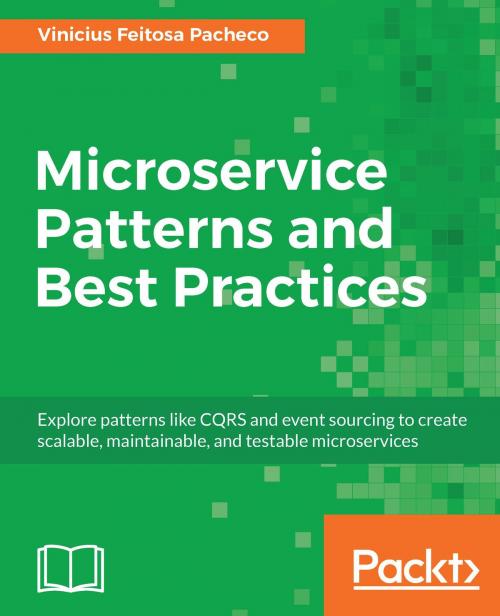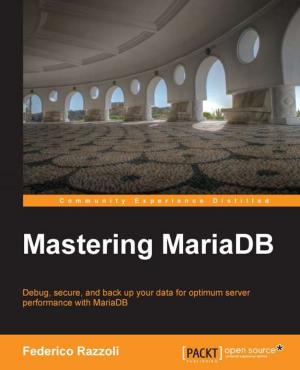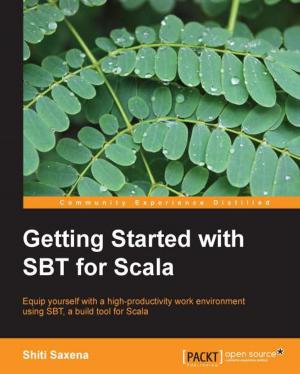Microservice Patterns and Best Practices
Explore patterns like CQRS and event sourcing to create scalable, maintainable, and testable microservices
Nonfiction, Computers, Programming, Systems Analysis, Programming Languages, General Computing| Author: | Vinicius Feitosa Pacheco | ISBN: | 9781788471206 |
| Publisher: | Packt Publishing | Publication: | January 31, 2018 |
| Imprint: | Packt Publishing | Language: | English |
| Author: | Vinicius Feitosa Pacheco |
| ISBN: | 9781788471206 |
| Publisher: | Packt Publishing |
| Publication: | January 31, 2018 |
| Imprint: | Packt Publishing |
| Language: | English |
Explore the concepts and tools you need to discover the world of microservices with various design patterns
Key Features
- Get to grips with the microservice architecture and build enterprise-ready microservice applications
- Learn design patterns and the best practices while building a microservice application
- Obtain hands-on techniques and tools to create high-performing microservices resilient to possible fails
Book Description
Microservices are a hot trend in the development world right now. Many enterprises have adopted this approach to achieve agility and the continuous delivery of applications to gain a competitive advantage. This book will take you through different design patterns at different stages of the microservice application development along with their best practices.
Microservice Patterns and Best Practices starts with the learning of microservices key concepts and showing how to make the right choices while designing microservices. You will then move onto internal microservices application patterns, such as caching strategy, asynchronism, CQRS and event sourcing, circuit breaker, and bulkheads. As you progress, you'll learn the design patterns of microservices.
The book will guide you on where to use the perfect design pattern at the application development stage and how to break monolithic application into microservices. You will also be taken through the best practices and patterns involved while testing, securing, and deploying your microservice application. At the end of the book, you will easily be able to create interoperable microservices, which are testable and prepared for optimum performance.
What you will learn
- How to break monolithic application into microservices
- Implement caching strategies, CQRS and event sourcing, and circuit breaker patterns
- Incorporate different microservice design patterns, such as shared data, aggregator, proxy, and chained
- Utilize consolidate testing patterns such as integration, signature, and monkey tests
- Secure microservices with JWT, API gateway, and single sign on
- Deploy microservices with continuous integration or delivery, Blue-Green deployment
Who this book is for
This book is for architects and senior developers who would like implement microservice design patterns in their enterprise application development. The book assumes some prior programming knowledge.
Explore the concepts and tools you need to discover the world of microservices with various design patterns
Key Features
- Get to grips with the microservice architecture and build enterprise-ready microservice applications
- Learn design patterns and the best practices while building a microservice application
- Obtain hands-on techniques and tools to create high-performing microservices resilient to possible fails
Book Description
Microservices are a hot trend in the development world right now. Many enterprises have adopted this approach to achieve agility and the continuous delivery of applications to gain a competitive advantage. This book will take you through different design patterns at different stages of the microservice application development along with their best practices.
Microservice Patterns and Best Practices starts with the learning of microservices key concepts and showing how to make the right choices while designing microservices. You will then move onto internal microservices application patterns, such as caching strategy, asynchronism, CQRS and event sourcing, circuit breaker, and bulkheads. As you progress, you'll learn the design patterns of microservices.
The book will guide you on where to use the perfect design pattern at the application development stage and how to break monolithic application into microservices. You will also be taken through the best practices and patterns involved while testing, securing, and deploying your microservice application. At the end of the book, you will easily be able to create interoperable microservices, which are testable and prepared for optimum performance.
What you will learn
- How to break monolithic application into microservices
- Implement caching strategies, CQRS and event sourcing, and circuit breaker patterns
- Incorporate different microservice design patterns, such as shared data, aggregator, proxy, and chained
- Utilize consolidate testing patterns such as integration, signature, and monkey tests
- Secure microservices with JWT, API gateway, and single sign on
- Deploy microservices with continuous integration or delivery, Blue-Green deployment
Who this book is for
This book is for architects and senior developers who would like implement microservice design patterns in their enterprise application development. The book assumes some prior programming knowledge.















